Problem
Do you know that people in many part of the world travel many kilometers carrying water jerry can every day or few times a day to bring water for drinking, cooking, watering their plants and for many other reasons? If you are not aware, well you are about to.
Water scarcity, which is broadly understood as the lack of access to adequate quantities of water for human and environmental uses, is considered to be one of the most important global risks for society. Global water demands are expected to increase in the future because of increasing populations, urbanization, and industrialization. In addition, aspects of climate change and anticipated increases in extreme weather events are expected to contribute to increases in the frequency, severity, and duration of droughts, which can exacerbate water availability problems. In an area where there is lack of water supply at home, people travel very far to fetch water. In almost all society this task falls under the women. It is very common to see women carrying 25 liter Jerry Can on their back or on their head and travel many kilometers from the source like river, lake or well to their homes. Describing how challenging it is can only be achieved if you try it yourself but to give you an idea on the challenge,
The first problem is the concentrated weight of the 25 litter jerry can which will force you to use only one or two part of your body for support which requires enormous amount of force to overcome the high pressure.
The second problem is the distance they have to travel in a very rough terrain full of mountains, muddy ground during rain, hole and sloppy ground, which is impossible even for a wheel aid transport.
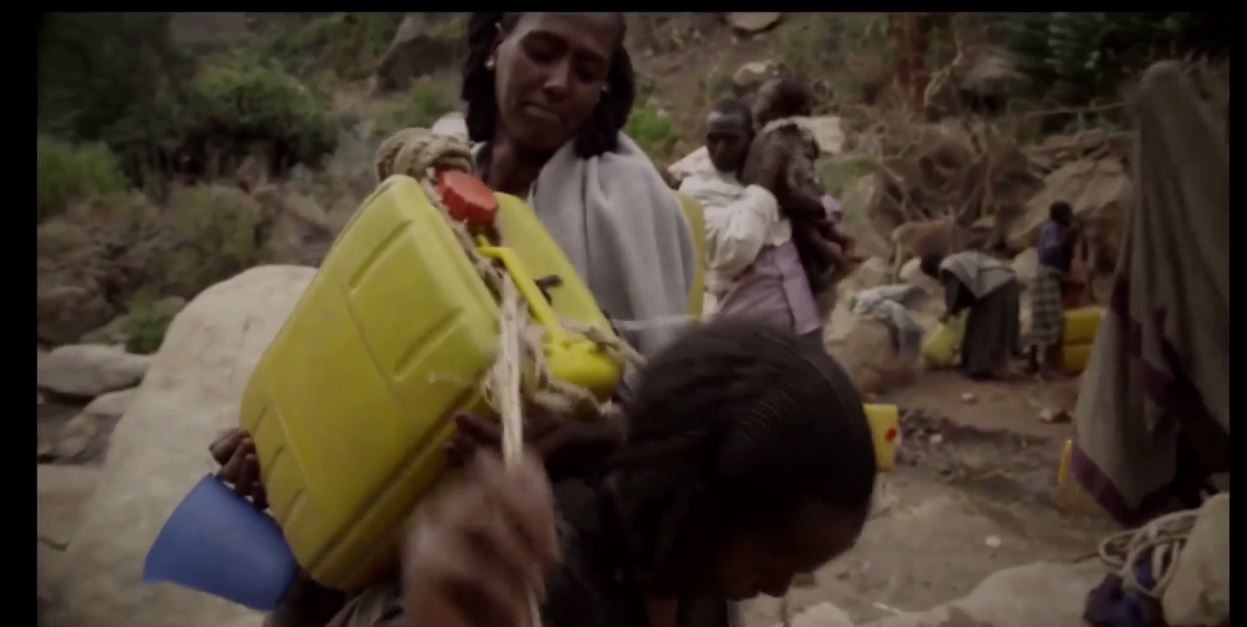
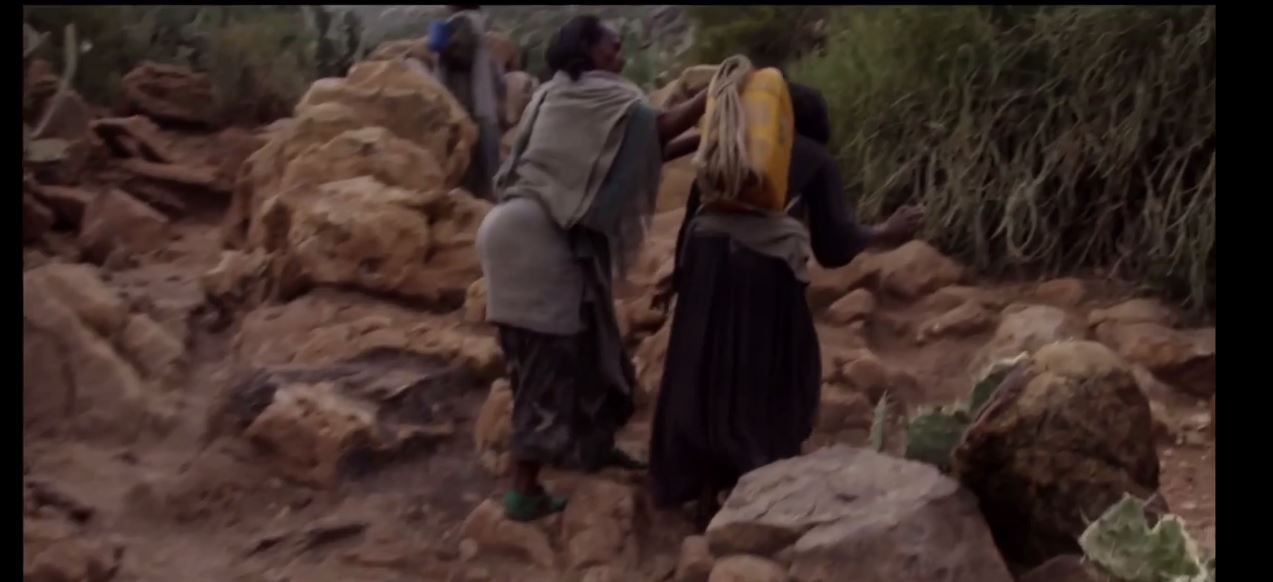
Solution
The basic scientific concept for the development of this product is based on the fact that distributed force generates less pressure or impact than concentrated force. Instead of the standard shape of the 25 litter Jerry Can, Anteneh’s Jerry Can has torus shape with the same volume as the standard jerry can. For prototyping simplicity, the shape of torus is made square with center to center length of 66cm with pipe diameter of 11cm. At two opposite side of the pipes there are two attached lathers that are used to hold the Anetenh’s Jerry can on your shoulder. This will reduce the pressure of the water by distributing the weight of the water and utilize all part of our body for support. To maintain the load close to center of gravity which is the person carrying it, the diameter of the pipe can be varied and the length of the pipe will be varied depending up on the amount variation of the diameter based on the size model of the user. Which means for thin peoples the diameter is increased and length will be decreased and for plus size people the diameter is decreased and the length will be increased. Both lathers are attached to each other with a lather for hand grab incase two peoples want to transport one Anteneh’s Jerry Can.

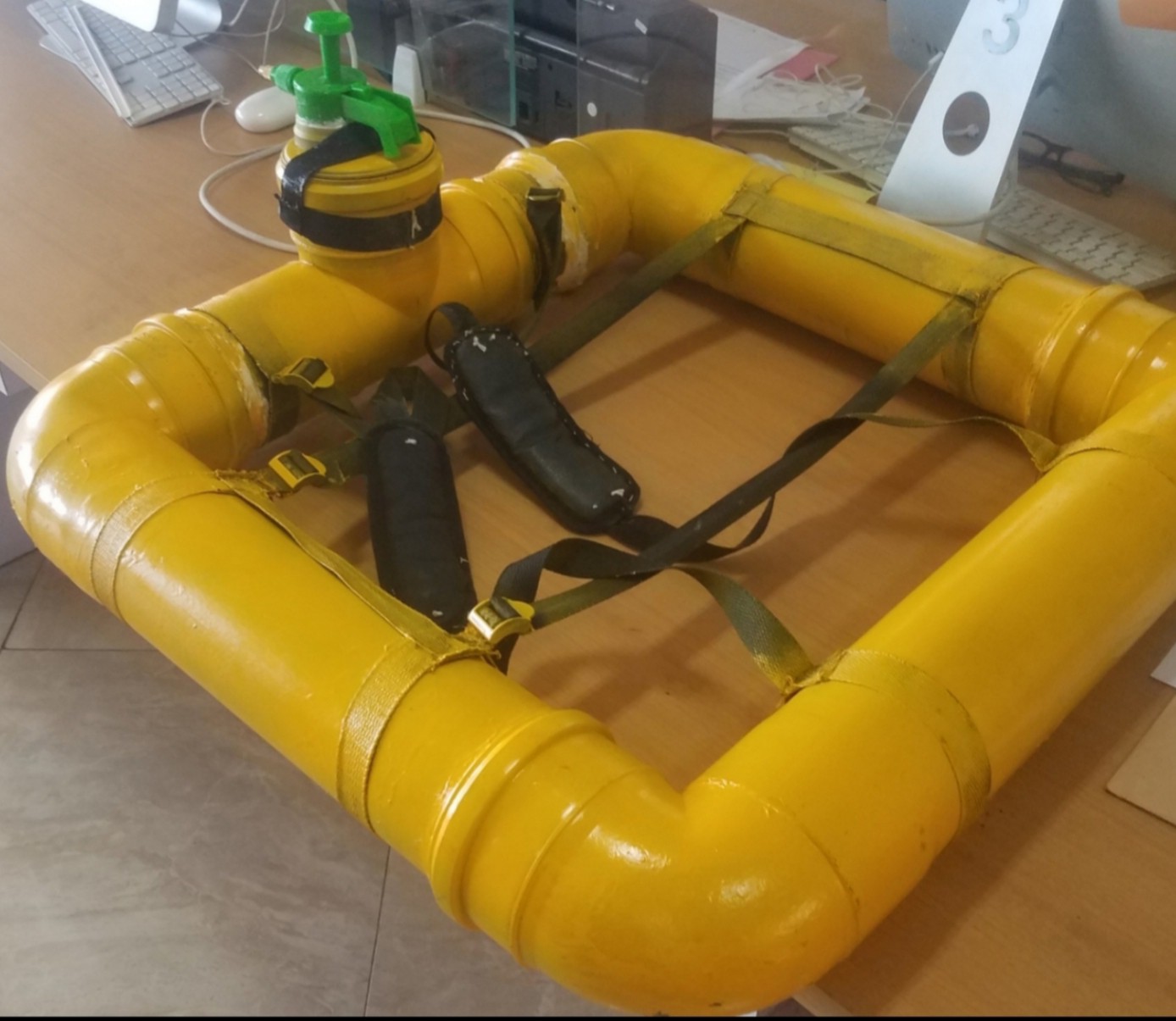
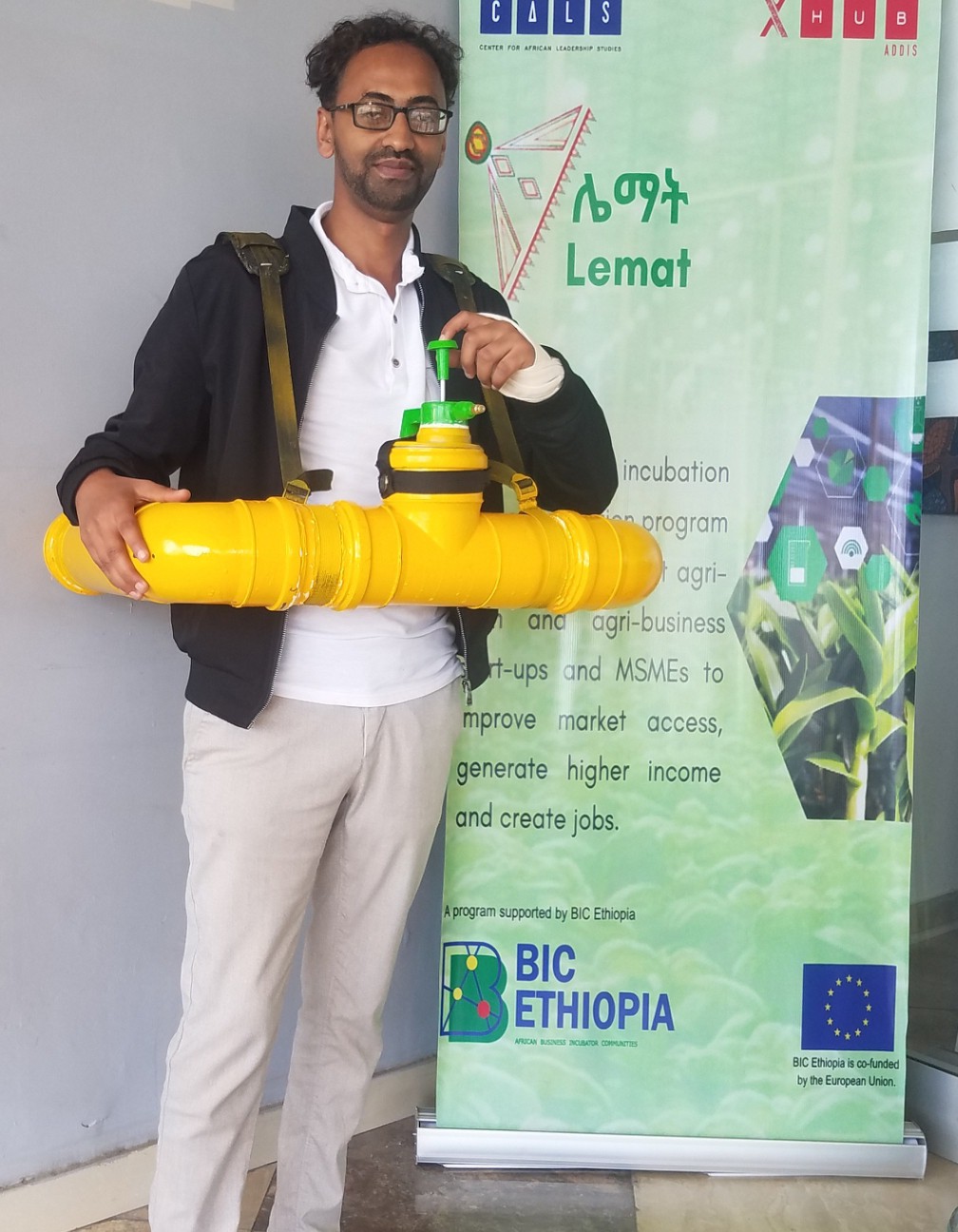
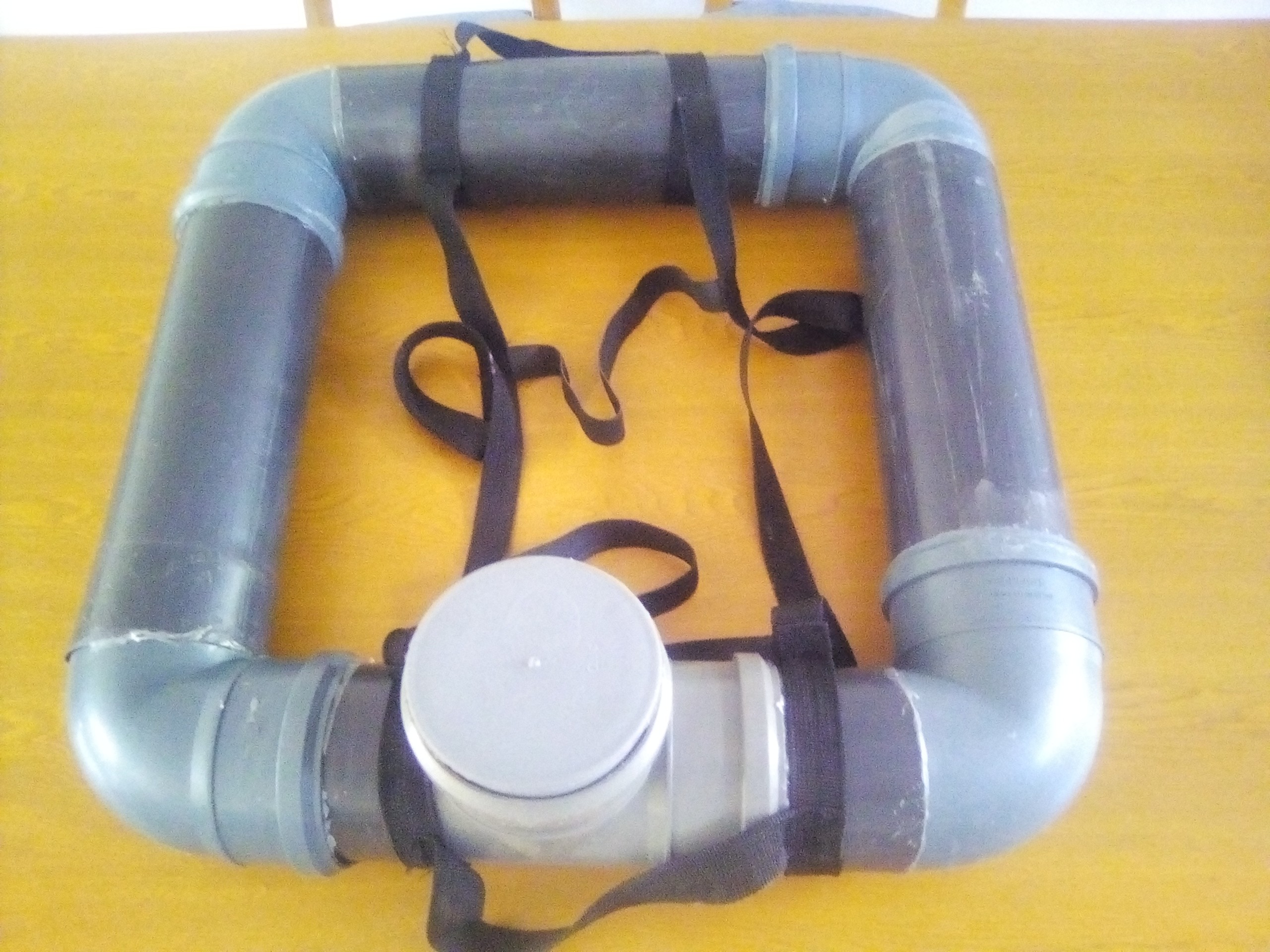
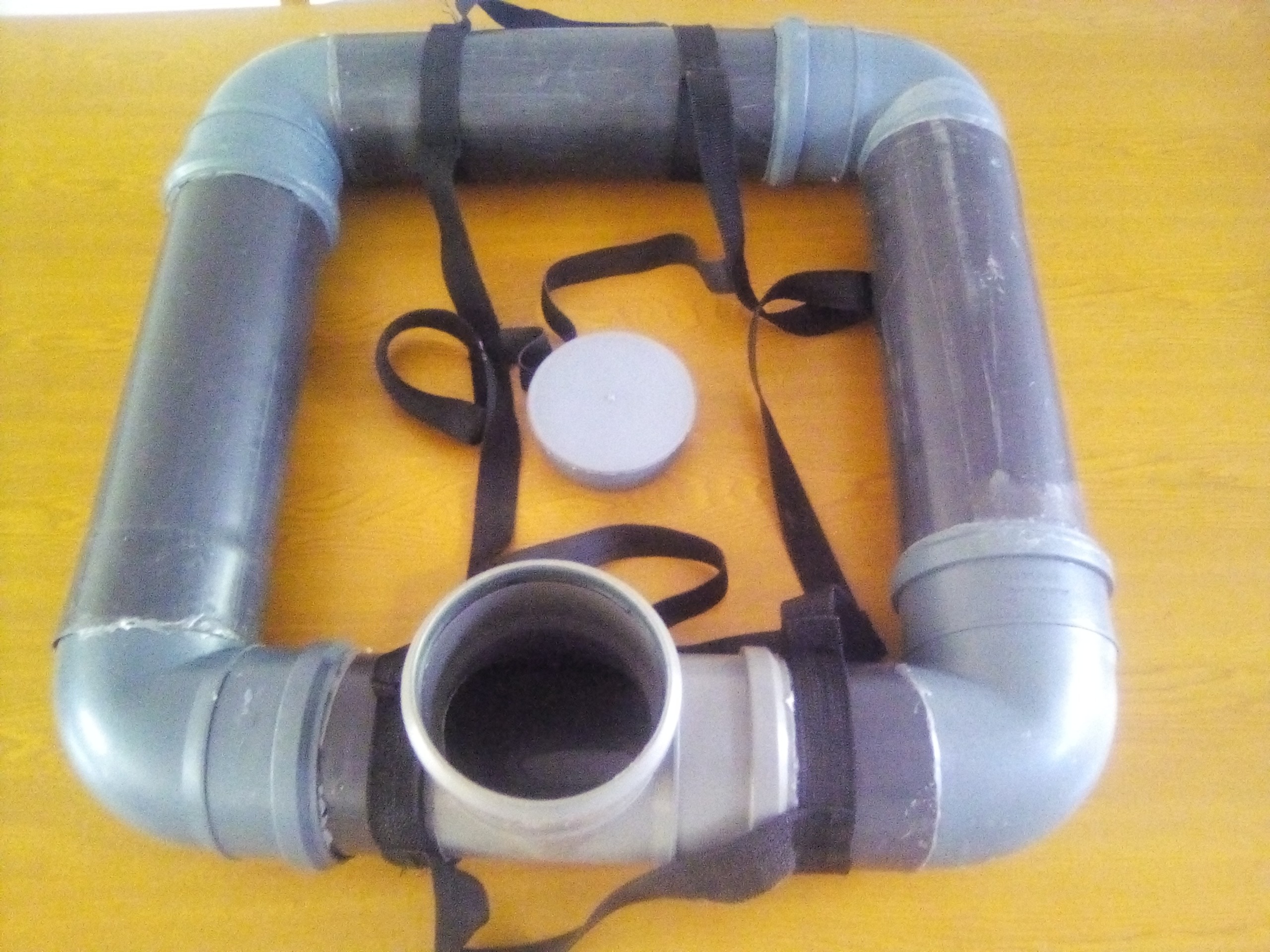
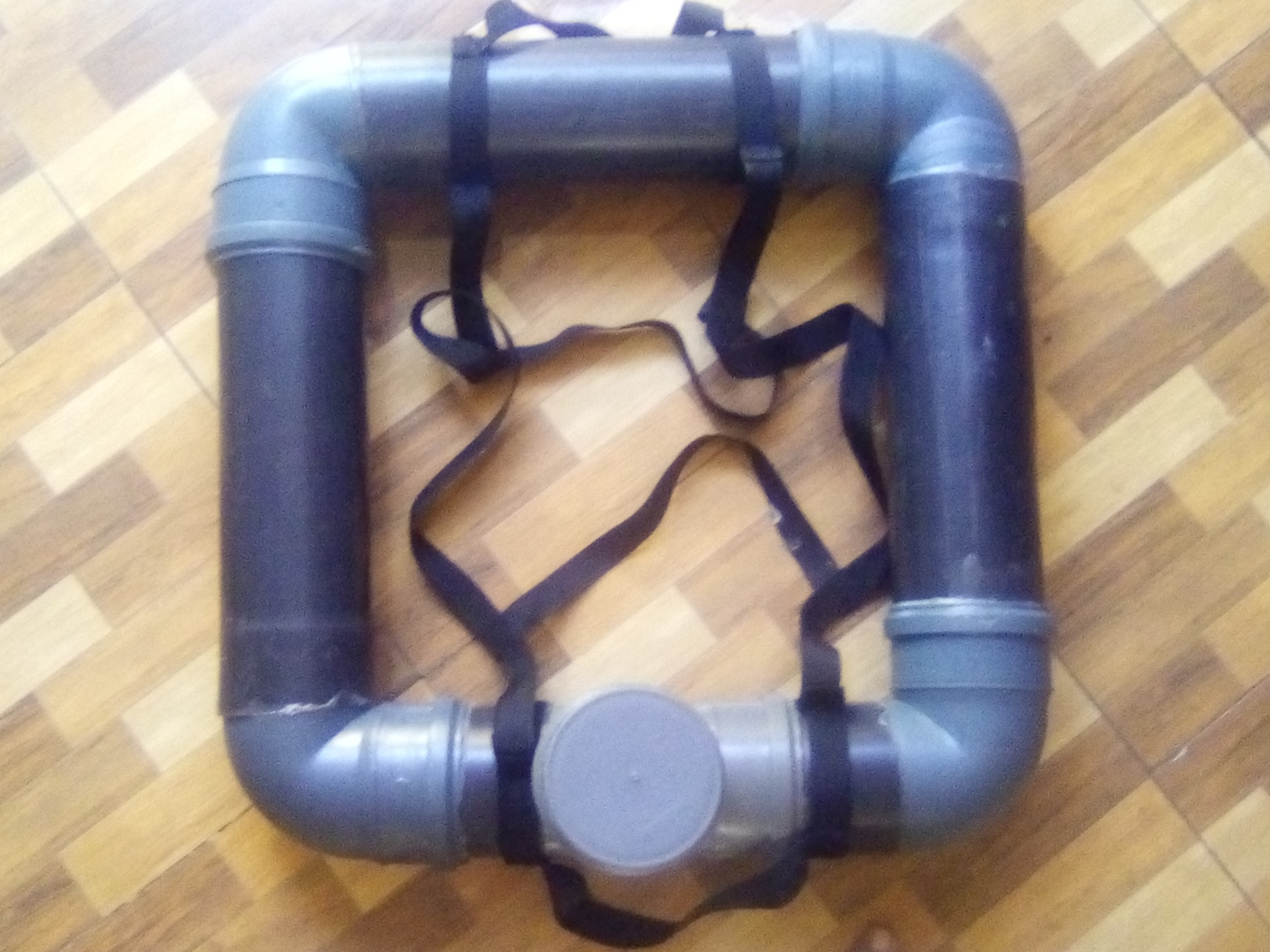

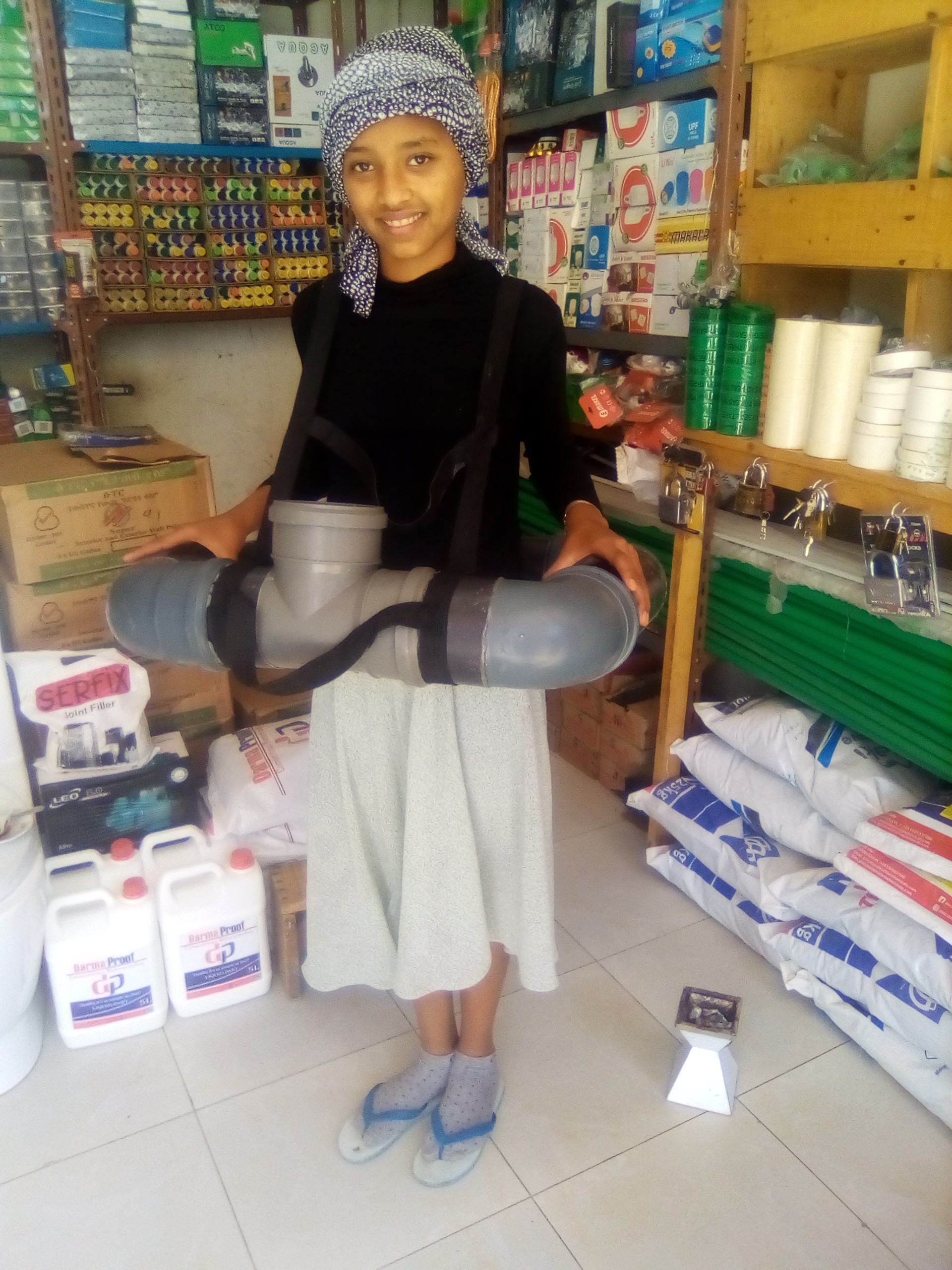
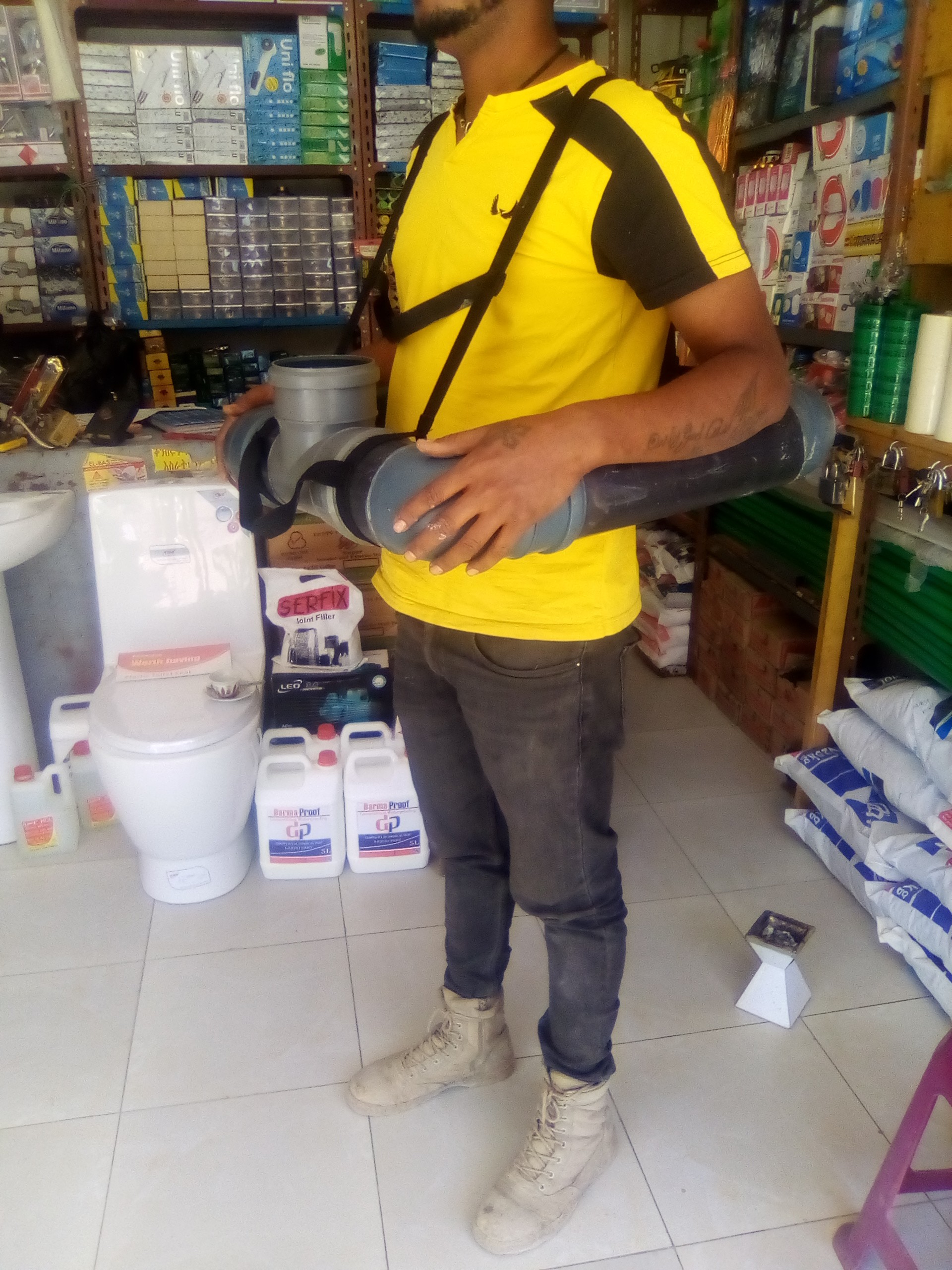
Market
According to reports some 2.2 billion people around the world do not have safely managed drinking water services, 1.1 billion people lack access to water and 2.7 billion experience water scarcity at least one month a year. By 2025, two-thirds of the world’s population may be facing water shortages and countries with the highest percentage of the population lacking basic access to water are in great risk like Eritrea (80.7% lack basic water services), Papua New Guinea (63.4% lack basic water services), Uganda (61.1% lack basic water services), Ethiopia (60.9% lack basic water services), Somalia (60% lack basic water services), Angola (59% lack basic water services), Democratic Republic of the Congo (58.2% lack basic water services), Chad (57.5% lack basic water services), Niger (54.2% lack basic water services), Mozambique (52.7% lack basic water services) and so on. Therefore it is inevitable that people living in these zones will have to go to places where there is water source to fetch water. The location of the water is usually in places where there is no accessibility for wheel aid transportation and even if there is one the majority of the people do not afford it. So the peoples will have to use a Jerry Can to collect and transport the water just like they are doing to the current times.
This project does not completely solve their water need problem but it will ease their pain on the process of water fetching big time by providing a means to transport water with lower physical and mental energy expenditure, better comfort, better safety of physical health and lower cost. Lower physical and mental energy expenditure means the reduction in the amount of physical energy generation to overcome the concentrated weight which also leads to reduction in mental exhaustion because as the body gets tired so does the mind. Meaning imagine carrying x weight material on either left side or right side of your body. What will happen if you then carry x/2 weight of the same material on each side of your body? It will definitely add more stability because of the balance which leads to less effort to overcome the weight. This system will distribute not only on two side but also 360 degree equally. Currently when people carry the Jerry Can either on their back or their head they always lift their hands upward to support the Jerry Can. This hand elevation crates discomfort when walking in rough train but with this design there will not be any need of hand upward elevation beyond the chest area. The maximum hand lift they will make is only to support either the front part of the structure or the sides which has maximum elevation in the chest area. There have been many studies concerning effect of head load, hand load, single side shoulder loads on the spinal chord and lower back disorder. In the study of impact of load carriage on lumbar spine mobility among Indian workers during load carriage there has been found alterations in posture, gait, trunk and spine activity, which could be linked to lower back problem as seen in the following pictures.
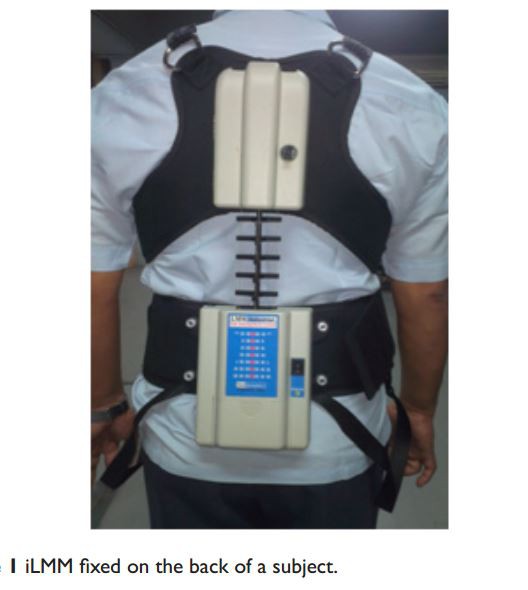
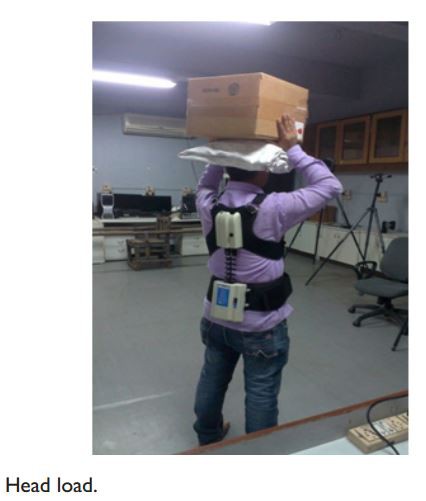
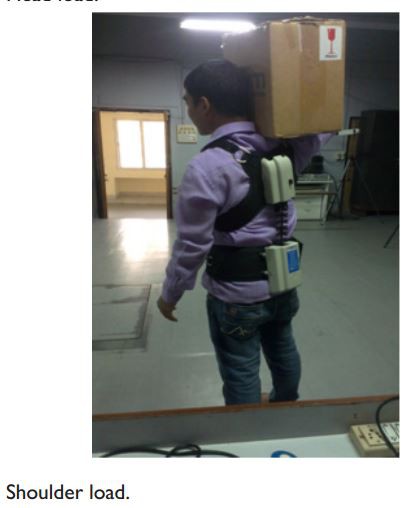
There is no data to talk about the effect of Anteneh’s Jerry Can due to lack of testing equipments but I want to test it to verify my claim. After I had the idea, the first thing I did was try to lift and travel 25 liter jerry can filled with water but I could not go too far. Then I build the prototype and filled 25 liters of water and then carried it. That is when I knew that I can travel long distance carrying this Jerry Can. This version of Anteneh Jerry Can cost 295 Ethiopian birr. This cost will be reduced once we start manufacturing the Anteneh’s Jerry Can using mold without any fitting in mass.
Prior Art
There has been some development to solve this problem and the only other solution the world has come up with is rolling jerry can that avoids carrying the water. This is great invention but there is no way people like in the video can utilize that because for one the obstacles of the rough landscape, the holes, stairs and the slops will not allow them especially in muddy ground during rainy season and it is just easy to carry the jerry can than rolling. The other reason is the price of the rolling jerry can. In Kenya the rolling jerry can is sold at 60 US dollars and in India 30 US dollars and if you convert it in to our currency it reaches more than 2000 and 1000 Ethiopian birr respectively. And rural communities are complaining the normal jerry cans are becoming expensive which is sold from 250 to 300 Ethiopian birr. This version of Anteneh Jerry Can cost 295 Ethiopian birr.
Numerical analysis
For all structural analysis let us take the two size of the product which is small and large to prove the volumetric content of the water.
Volumetric content
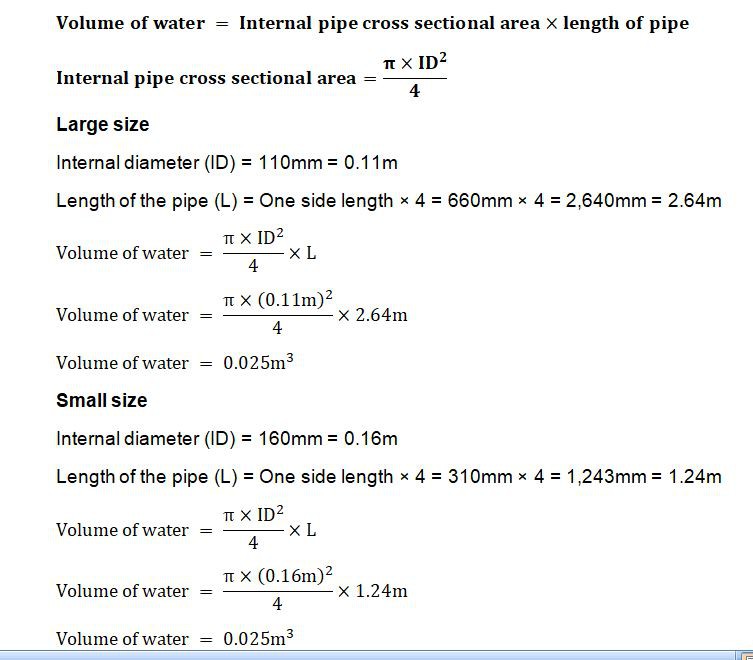
Load distribution
In order to analyze the actual numerical load distribution of the structure, we need to figure out the weight per length of the pipe throughout the entire structure. This can be calculated through the following analysis;
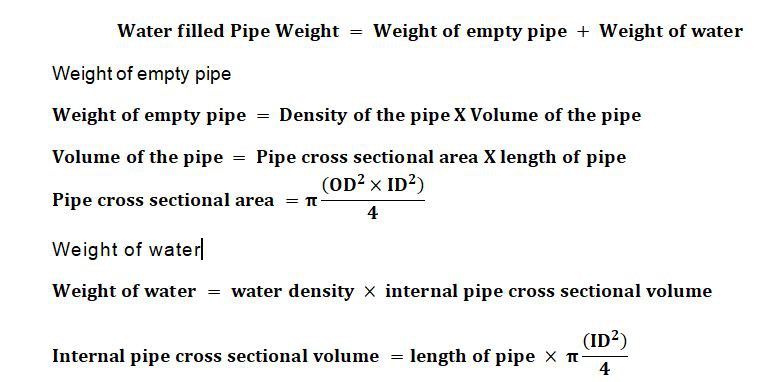

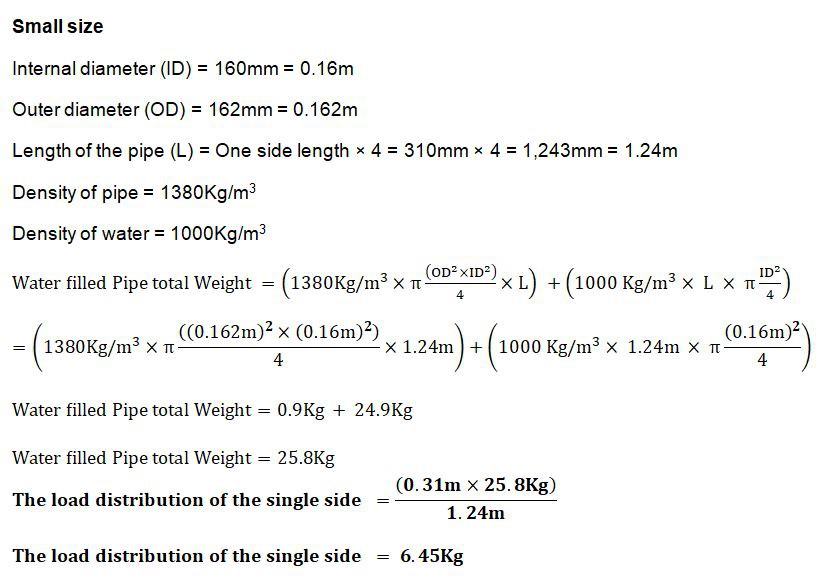
Center of gravity
In order to find the centroid of the structure let us divide the compound shape into basic shapes. In this case, it has four rectangles. Now let us name the four divisions as Area 1, Area 2, Area 3 and Area 4.

Area 1 = 0.782m × 0.162m = 0.126684m2
Area 2 = 0.458m × 0.162m = 0.074196m2
Area 3 = 0.782m × 0.162m = 0.126684m2
Area 4 = 0.458m × 0.162m = 0.074196m2

Cx = ∑Ax / ∑A = 0.157 / 0.4 = 0.3925
Cy = ∑Ay / ∑A = 0.157 / 0.4 = 0.3925

Force analysis
Risk
There are two potential risks when it comes to the design of this product.
- The first potential risk is the potential oscillation caused by inertia of the person carrying the Anteneh's Jerry Can. This is not a big risk because during the first test conducted I used my Arm by putting my hands on the Anteneh's Jerry Can to stabilize the oscillation. Putting your hands on the Anteneh's Jerry Can will solve the problem and you will have a way you can rest your hands at all times. But when you have some other objects you wish to carry on your hands while carrying Anteneh's Jerry can on your shoulder, the potential oscillation will become a problem. This can be solved easily by adding additional two straps on the opposite side pipe of the Anteneh's Jerry can which is on the left and the right position of the carrier. The first strap is fixed on the front of stomach of the carrier while the second strap is fixed to the back of the spinal cord of the carrier. The two straps acts as an anchor stabilizers for potential oscillation due to inertia.
- The second potential risk is the load concentration switch from the spinal chord to the shoulder only. This can be solved using the same solution provided for the first potential risk. The side straps installed on the left and right side of the carrier can also be attached to the whist of the person carrying the Anteneh's Jerry Can so that the load can be shared to the whist with the shoulder solving the problem with same solution as the first potential risk.
This means one solution can be used to solve two potential risks.
Supply projections
In a study conducted by Water.org they found that 42% of the population in Ethiopia has access to a clean water supply. That means only 47,082,000 peoples out of the 112,100,000 have access to clean water. The remaining 65,018,000 needs to find clean water source which usually involves fetching water from some source using Jerry can to transport the water.
My goal is to distribute the product on a large scale but it is important to start with a small margins to 10,000 - 20,000 customers in the first year of launch. This will enable us to test the market and get feedback to improve any potential problems from the end users from all topography usage.
On the second year of the product launch, we will progress to delivering 100,000 - 200,000 product per year. On the third year of the product launch, we will progress to delivering 300,000 - 400,000 product per year. On the fourth year of the product launch, we will progress to delivering 400,000 - 500,000 product per year. On the fifth year of the product launch, we will progress to delivering 600,000 - 1,000,000 product per year
In five years we will deliver 2,100,000 products at or maximum capacity.
Cost analysis
PVC pipe (110 millimeters in diameter and 2 meter in length) * 1 = 90.00 ETB
PVC 90 degree elbow (110 millimeters in diameter) * 4 = 120.00 ETB
PVC T connection (110 millimeters in diameter) * 1 = 50.00 ETB
PVC tap (110 millimeters in diameter) * 1 = 35 ETB
Inventor Profile
I have dedicated my life for invention and research because not only I have big dreams but also it is my only way out of poverty. We all have a talent we know or did not find out yet. Mine happens to be inventing. So, until now I have invented more than 70 inventions.
https://hackaday.io/projects/hacker/856765 https://contest.techbriefs.com/profile?user=89682 https://www.herox.com/crowdsourcing-community/antenehgashaw-123126 https://desall.com/User/AntenehGashaw/Portfolio https://challenges.openideo.com/profiles/antenh.g/contributions#recent-contributions
international honors
Winner of Mechanical maker challenge by NASA/ JPL- 2019 with my design invention “Mechanical eye”
Finalist in the TIC AMERICAS 2020 contest with my project “Caribbean Sargassum Problem”
Finalist in TKF plastic innovation challenge 2019 with my invention “Smart green washer”
Top 100 inventions of 2019 by create the future contest by tech briefs with my project “Cone solar panel”
Top 10 winner of TIA challenge 2019 with my multiple unique solutions and invention
Finalist in Enel challenge on MV & LV distribution challenge 2019 with my invention “Turbine for avoiding birds in MV & LV distribution lines”
In the recent Hawaii natural problem challenge which is the saving the Ohi’a challenge (https://conservationx.com/challenge/invasives/ohia), I submitted more than 30 possible solution which you can see via https://conservationx.com/challenge/invasives/ohia/projects
I have developed more that 20 inventions for solution, management and prevention of the Coronavirus (COVID-19) which you can see via https://solve.mit.edu/challenges/health-security-pandemics/solutions/22229 or https://contest.techbriefs.com/profile?user=89682
In 2020 I have invented more than 15 technologies related to increasing efficiency of energy generation, transmission and utilization through a clean environmentally friendly way which you can see via https://hackaday.io/projects/hacker/856765



 Anteneh Gashaw
Anteneh Gashaw